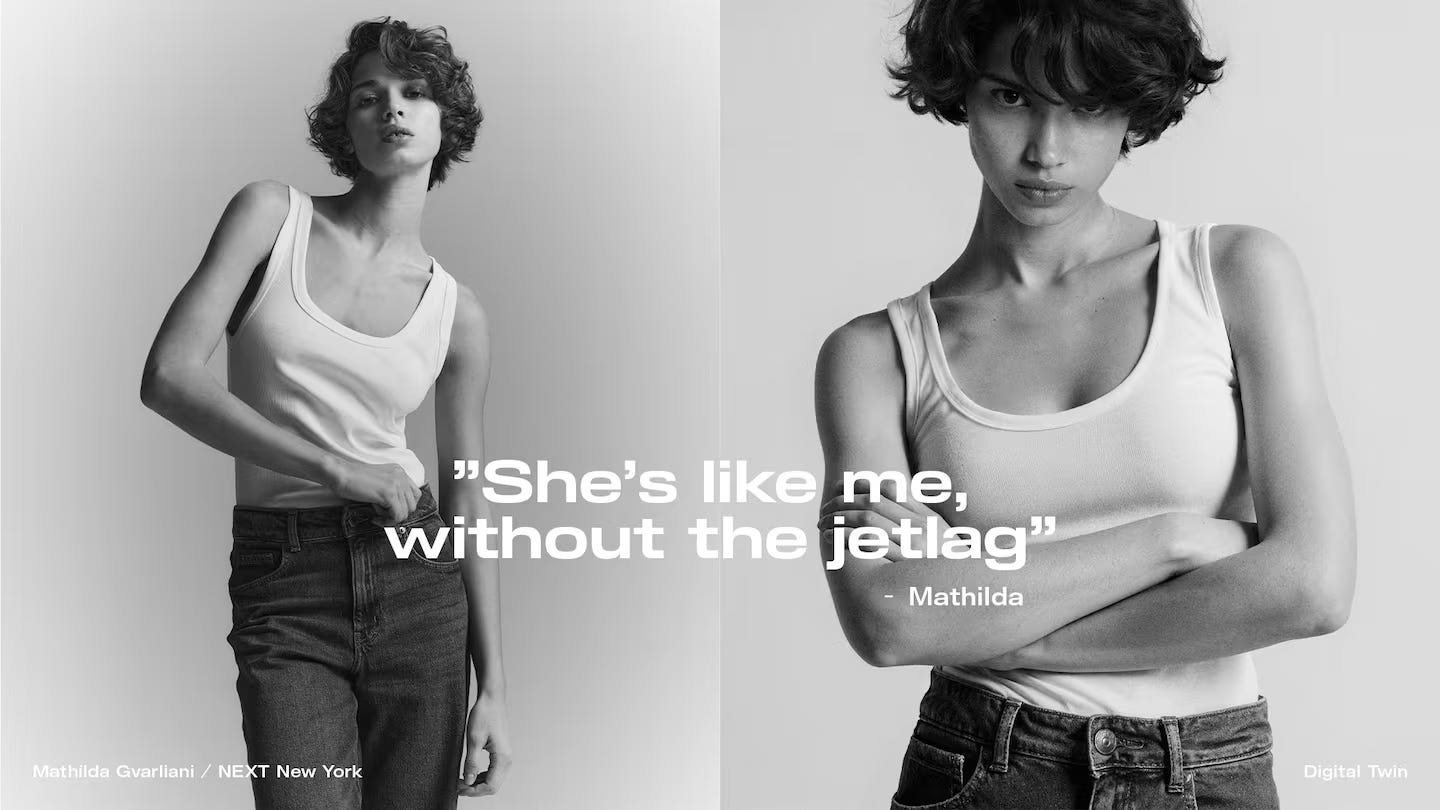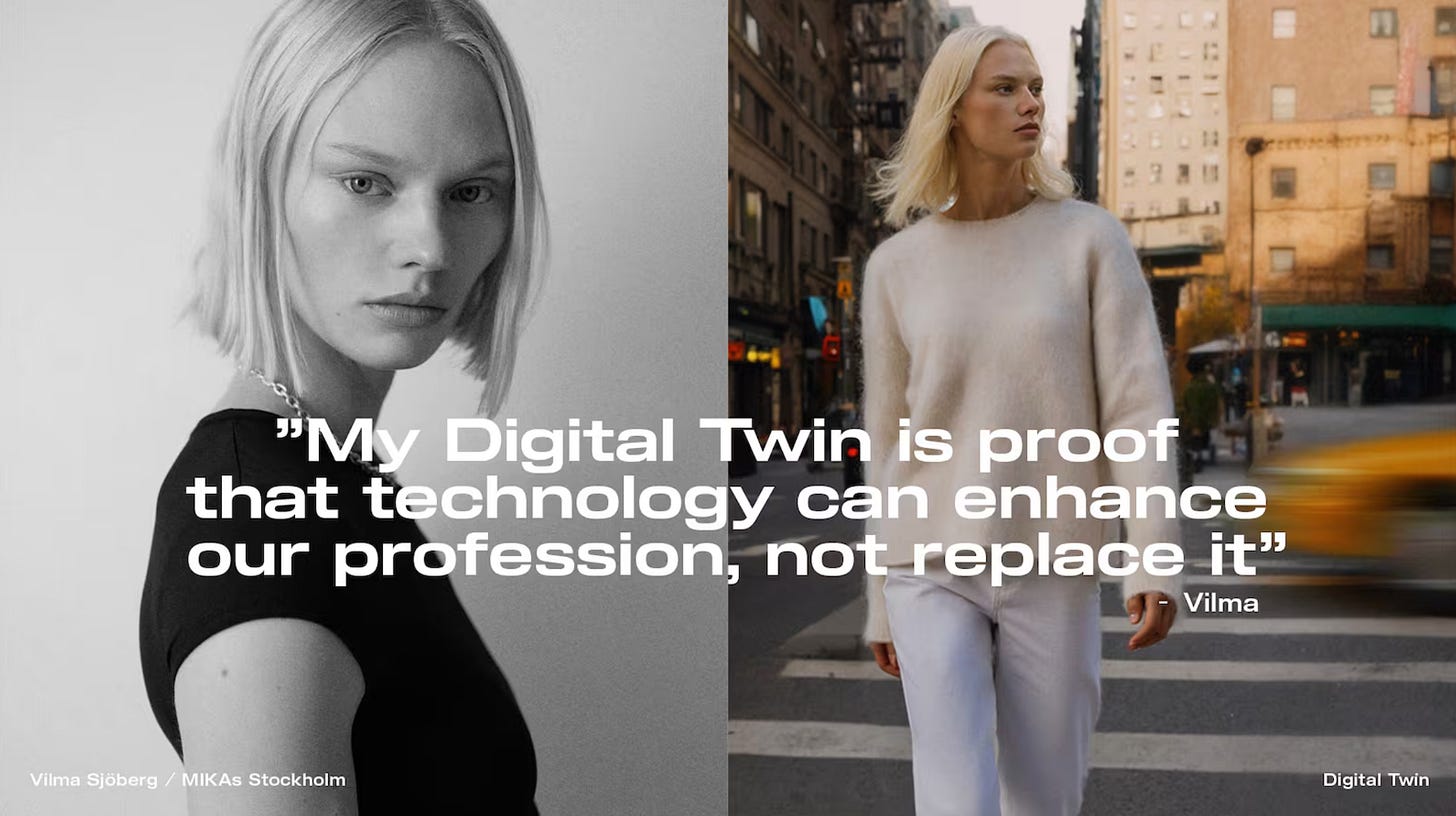Between hyperreal and human
What the return to candid imagery tells us about fashion photography today
There’s a strange thing happening in photography right now.
While AI is busy reshaping the creative industries, generating photorealistic campaigns without models, stylists, or even photographers, fashion brands are quietly reaching back toward the raw, the candid, the human. Think flash-lit party photos, overexposed moments, grain, clutter, awkward angles. A return to “imperfection” that looks and feels like something from the early 2000s or a lost roll of film from your teenage years.
According to Creative Boom's 2025 Photography in Design Trend Report, we’re entering an era of “realism resurgence.” Photos that are “less polished,” full of movement, off-balance, even messy.
The contrast couldn’t be sharper.
On one side, the synthetic: AI-generated campaigns where every detail is perfectly controlled, with a digital-twin model. On the other, the instinctual: photographers shooting with compact cameras, using harsh flash, and embracing the mistakes. One feels like the future. The other feels like a memory. And yet, both are happening at the same time.
As a fashion photographer, I find myself stuck between these two worlds.
My commercial work often leans toward sleek and clean, carefully composed, color-graded, retouched. But personally? I crave the opposite. A mix between street photography and fashion. Flash in daylight. Motion blur. A moment I didn’t plan. But at the same time, I’m drawn to staged images that carry an awkward, almost unsettling feeling, like something’s just slightly off, and that’s what makes it interesting. I feel more connected when the image feels less perfect, less polished, more alive. And I’m not alone.
There’s something fascinating about the idea that the more AI tries to mimic us, the more we crave what it can’t quite replicate: spontaneity, vulnerability, emotional chaos.
A perfectly lit AI-generated model can look like a photo, but it doesn’t feel like one.
It doesn’t carry the tension of a real subject, the unpredictability of real light, or the presence of a human behind the lens.
So what’s really happening here?
Is this “candid revival” a trend? A form of rebellion? Or is it just a clever aesthetic, imperfection repackaged as a moodboard?
Maybe it’s all of those things.
What I do know is that the timing isn’t accidental. The rise of raw, grainy, flash-heavy imagery comes at the exact moment when fashion photography is under pressure to become more efficient, more AI-integrated, more automated. And in the face of all that synthetic control, messiness becomes its own kind of luxury. A sign that someone was really there.
Photography has always been shaped by technology. But it’s also shaped by emotion.
The current shift isn’t just about style, it’s about identity. Who are we as image-makers when machines can generate whatever we ask for? What makes a photo matter now?
Maybe it’s not about the quality of the lens or the megapixels or the polish.
Maybe it’s about something far less tangible: presence, intention, soul.
And maybe, in the end, real won’t mean “unedited.”
It’ll mean “human.”
The pictures in this article are from BoF Article






